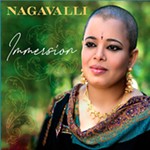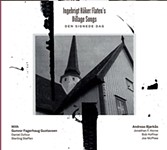Dracula, Bass Concert Hall, November 5
Live Shots
Dracula
Bass Concert Hall, November 5
Taking cover from the rain, the crowd of dark overcoats arrived at UT's Bass Concert Hall dressed for the occasion: Universal Pictures' 1931 horror classic Dracula. Settling into the enormous hall, the full house tittered with post-Halloween excitement as the stage's enormous red curtains swung open and darkness fell on the bold black letters "D-R-A-C-U-L-A." On cue, the first screeching of high-pitched staccato chords found the audience searching for the unseen Kronos Quartet. Suddenly, the world-renowned string quartet, augmented by the evening's featured composer on piano, Philip Glass, materialized from behind the bottom of the see-through screen with an illusory quality, basking in a soft blue light as the crowd burst into a roar. With the musicians fading in and out of view throughout the performance, it was difficult choosing whether to relegate one's attention to the screen or what was behind it, but eventually, Bela Lugosi's sinister Dracula won out, especially given Glass' performance. Nearly as commanding were moments when the action on the screen was in sync with Glass' original score, one such moment occurring when the musicians were bathed in red as Dracula's demise was at hand. In fact, the score forced open caskets and heightened the mood throughout the film, complementing the narrative structure even as it competed to be heard. Even so, at times the dialogue simply could not compete with the ferocity of the strings. One suspects the film's director, Tod Browning, never had music in mind for Dracula, because there's scarcely space for it, but to Glass' credit, his score provided dynamic changes and smooth transitions that served the film well. As with Bernard Herrmann's score on Psycho, Glass chose a monochromatic score utilizing only strings, lending the Gothic black-and-white film a previously absent, audibly chilling backdrop. True, the score's minimalistic nature may have taken away the truly frightening aspects of the movie, but it replaced them instead with a hypnotic effect. Though parts of the score were up-tempo, almost frantic, most of the pieces consisted primarily of slow scale progressions. The Kronos Quartet's explosive beginning had an equal counterpart at the end of the film as Dracula disappeared into the dark. The slow procession of the crowd departing afterwards seemed as if something was luring them into that same uncertain night.
A note to readers: Bold and uncensored, The Austin Chronicle has been Austin’s independent news source for over 40 years, expressing the community’s political and environmental concerns and supporting its active cultural scene. Now more than ever, we need your support to continue supplying Austin with independent, free press. If real news is important to you, please consider making a donation of $5, $10 or whatever you can afford, to help keep our journalism on stands.
Support the Chronicle








